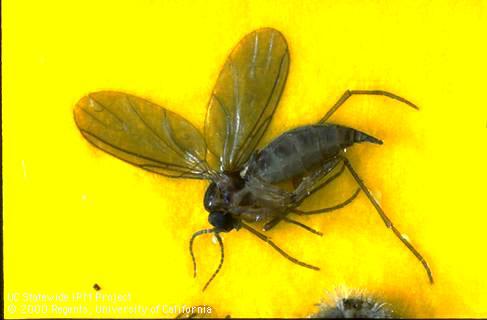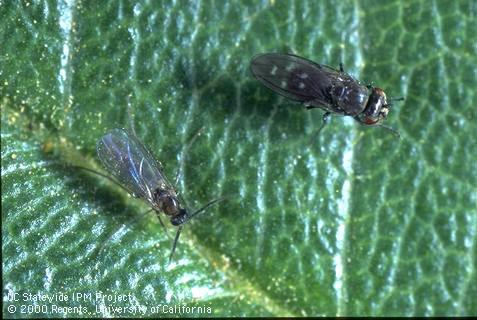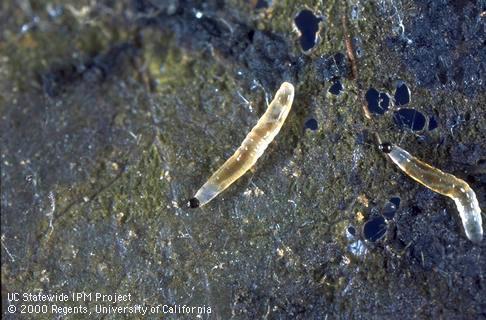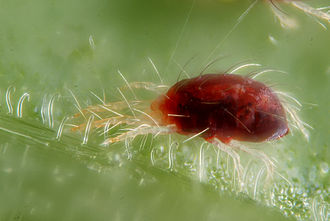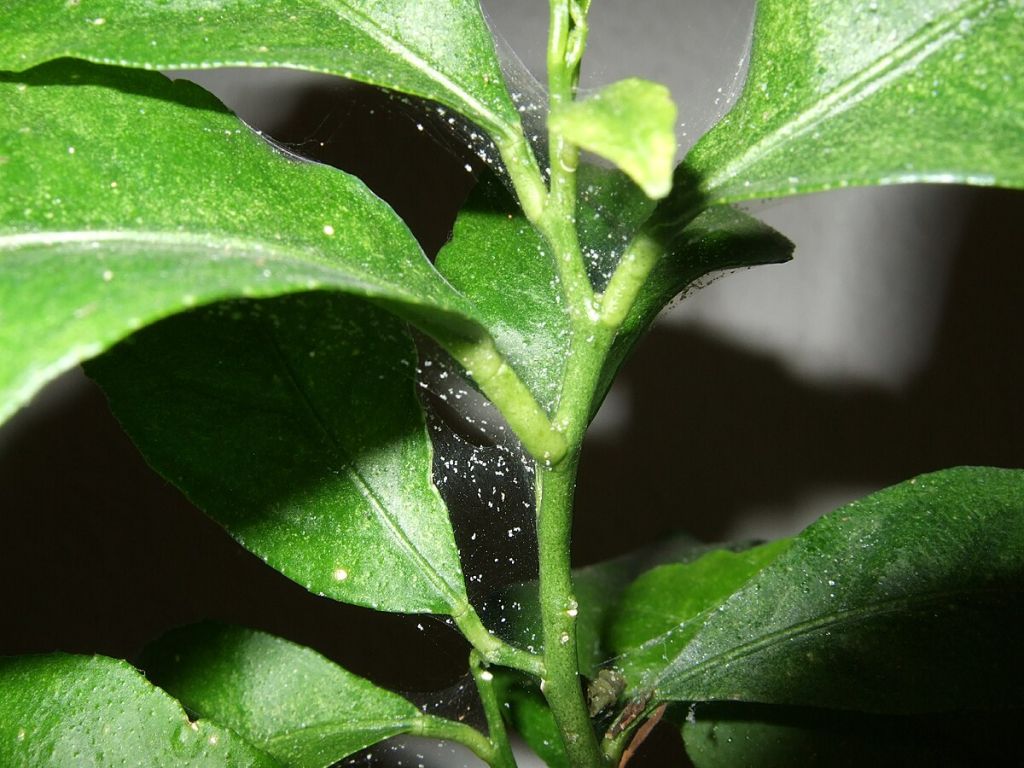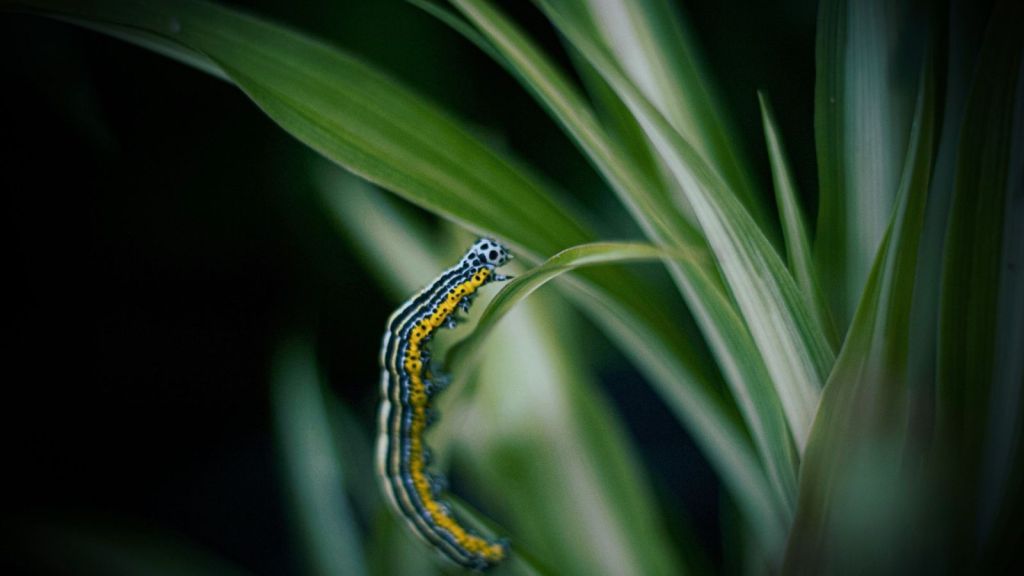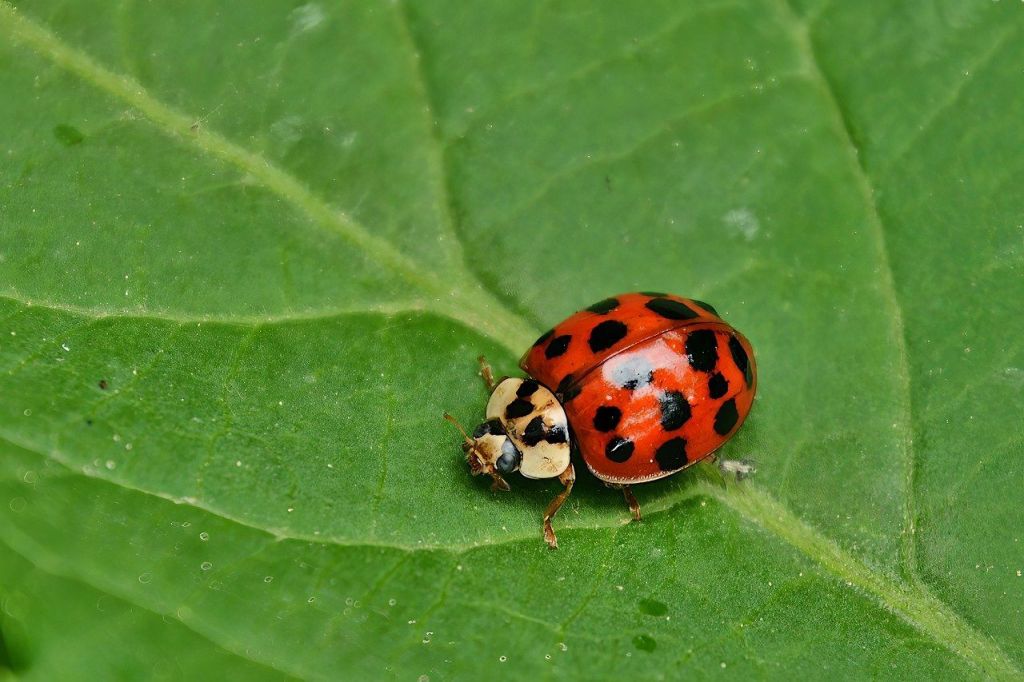A garden thrives when harmony prevails among its inhabitants. However, the beauty and bounty of your green retreat can be disrupted by tiny, unwelcome guests—plant pests. These pests can turn a thriving garden into a wilting wasteland. Identifying and eradicating these culprits promptly is crucial to maintaining a healthy garden. In this article, I’ll share the most common pests that can infest the garden. More importantly, I’ll discuss the best solutions to the problem.
About Houseplant Pests
As a plant owner, understanding houseplant pests is essential. I’ve learned to recognize common pests such as aphids, spider mites, mealybugs, fungus gnats, whiteflies, and scale insects. I stay vigilant for signs of infestation, like yellowing leaves, webbing, or visible insects. Preventive measures (such as maintaining good plant hygiene and quarantining new plants) have helped me avoid pest problems. I’ve also learned to avoid overwatering, which can attract pests like fungus gnats.
When pest control is needed, I prefer natural methods like introducing beneficial insects or using insecticidal soaps. Embracing Integrated Pest Management (IPM) strategies, including regular monitoring, has been crucial in detecting pests early. By following these guidelines, I can effectively manage and prevent houseplant pests, ensuring the health and vitality of my indoor plants.
My Picks For Common Houseplants Pests
Regarding houseplant pests, exploring the details of some notorious garden invaders and understanding how their characteristics and feeding habits can impact your beloved plants is essential. Below, I compact a list of the ten most common plant pests you can find around your house:
#1. Fungus Gnats
Fungus gnats are small flying insects that resemble tiny mosquitoes. Moist potting soil draws attention from this type of pest and feeds on organic matter. The larvae, which resemble small, translucent worms, can cause damage to plant roots, leading to wilting and poor plant growth. Infested plants may show signs of yellowing or wilting leaves.
Treating fungus gnats in short:
- Allow the soil to dry between waterings.
- Use sticky traps.
- Apply nematodes to control larvae.
#2. Spider Mites
Despite their minute size, spider mites are among the most damaging plant pests. These tiny creatures are difficult to spot with the naked eye but often leave a distinctive, fine webbing on the plant leaves they inhabit. They come in various colors, although red spider mites are prevalent in gardens.
Like aphids, spider mites are sap-suckers. They are common in plants like parlor palms. Keep your palm healthy and free from these pests to prevent them from sucking juices and the foliage from losing color. Spider mites start killing plants since it’s small.
Treating spider mites in short:
- Increase humidity.
- Spray with water to remove them.
- Use insecticidal soap or neem oil for severe infestations.
#3. Aphids
Often referred to as plant lice, aphids are small, soft-bodied insects that come in various colors. However, these pests are best recognized as one reputable bug laying black eggs on plant leaves. They have sap-sucking abilities and are usually found in clusters on new growth or undersides of leaves. Aphids are prolific breeders, and their populations can quickly explode under favorable conditions.
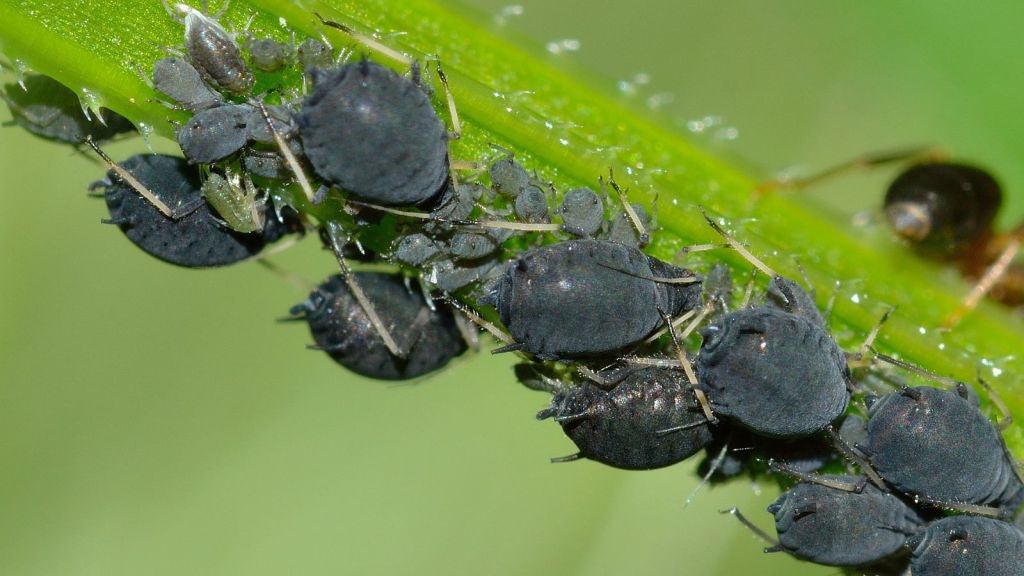
One of the most damaging aspects of aphids is their method of feeding. They extract the nutrient-rich sap from plants, depriving them of essential nutrients. As a result, leaves might curl and turn yellow, and overall plant growth can be stunted. Aphids also excrete a sugary substance called honeydew, which causes other pests to appear and promote sooty mold.
A summary of dealing with aphids:
- Spray strong jets of water.
- Introduce beneficial insects like ladybugs.
- Use insecticidal soap or neem oil.
#4. Slugs and Snails
These slimy creatures are nocturnal feeders, coming out at night to feast on various plant species. Slugs and snails are typically gray or brown and are easily identified by their slimy trails.

Their feeding habits damage plants as they chew large, irregular-shaped holes in leaves, stems, and fruit. Young plants and seedlings are at risk as slugs and snails can consume these tender plants entirely. Their feeding can stunt growth, reduce crop yields, and even kill plants if the damage is severe.
A brief demonstration on dealing with slugs and snails: To deal with slugs and snails in house gardening, remove hiding places, handpick them off plants, create barriers, use beer traps, encourage natural predators, apply organic deterrents, and practice good garden hygiene.
#5. Caterpillars
Caterpillars have various shapes, sizes, and colors but are generally elongated with distinct, ring-like segments along their bodies. They are voracious eaters, using their strong jaws to consume leaves, flowers, and fruits. The damage they cause is typically easy to spot—look for chewed leaves with a Swiss cheese-like appearance, stripped stems, or notched fruits. Caterpillars can cause substantial damage quickly, leading to defoliated plants and severely reduced crop yields.
A quick summary on how to deal with caterpillars: When dealing with caterpillars at home, identify the species and handpick them, use physical barriers, introduce beneficial insects, practice companion planting, and consider organic sprays as a last resort. Stay vigilant to prevent caterpillar damage to your plants.
#6. Beetles
Beetles form a diverse group, and many species are plant pests. Adult beetles and their larvae often feed on plants, albeit in different ways. While adults typically consume leaves, flowers, and fruits, larvae (grubs) are often root feeders.
The damage caused by beetles varies widely depending on the species. Like Japanese beetles, some can skeletonize leaves, leaving only the veins behind. Others, like vine weevils, can cause notching in leaf edges. The root-feeding larvae of beetles can cause wilting, yellowing, and in severe cases, plant death.
To briefly deal with beetles in your home garden:
- Handpick them.
- Use physical barriers.
- Practice companion planting.
- Maintain garden hygiene.
- Consider organic sprays.
- Rotate crops.
#7. Whiteflies
Whiteflies are tiny, white, moth-like insects congregating on the leaves undersides, especially when disturbed. They suck plant sap, causing yellowing and wilting of leaves. Whiteflies also excrete honeydew, which has the same effect as aphids. Infested plants may exhibit poor growth and reduced vigor.
Dealing with whiteflies:
- Use yellow sticky traps.
- Introduce natural predators like parasitic wasps.
- Apply insecticidal soap or neem oil.
#8. Scale Insects
Scale insects are tiny, immobile pests attached to plant stems, leaves, or fruit. They have a hard, protective shell-like covering that makes removing them difficult. Scale insects feed on plant sap, causing yellowing, stunted growth, and leaf drop. They can be found in various sizes and shapes, from flat and elongated to round and waxy.
Dealing with whiteflies:
- Physically wipe them with a piece of cloth dipped in rubbing alcohol.
- Use insecticidal soap or horticultural oil.
- Introduce natural enemies like predatory insects.
#9. Thrips
Thrips are tiny, slender insects that feed on plant tissues by scraping and puncturing them to extract fluids. Infested plants may display silver or bronze streaks on leaves, distorted growth, and damaged flowers. Thrips can also transmit viruses, further impacting the health and appearance of plants.
Taking care of thrips: Prune and remove affected plant parts, introduce beneficial insects like predatory mites, or use insecticidal soap or neem oil.
An Overview of Common Pest Management Strategies
Effective pest management only sometimes means reaching for the most potent chemicals. A layered strategy involving natural, cultural, and—if necessary—chemical methods is often the most effective and sustainable approach.
#1. Natural Methods
As a gardener, I’ve witnessed the invaluable role of beneficial insects and animals in pest control. Ladybugs, lacewings, and hoverflies have been influential allies against aphids, while birds, frogs, and hedgehogs help keep various pests in check. I’ve created a harmonious garden ecosystem that promotes natural pest control and a thriving environment by planting nectar-rich flowers and providing habitats like bird boxes and ponds.
For pest problems that need immediate action, I’ve found water sprays to be surprisingly effective. A vigorous spray can dislodge pests like aphids and mites from my beloved plants. I’ve also concocted homemade soap and vinegar solutions for more stubborn adversaries. In particular, I’ve found the vinegar spray to be a formidable weapon against resilient aphids.
However, I’ve learned to continuously test these homemade remedies on a small part of the plant first to avoid unintended damage.
Harnessing these natural pest control methods, I’ve found a more harmonious way to interact with my garden’s smaller inhabitants, fostering balance and health in my green sanctuary.
#2. Chemical Methods
I reluctantly resort to chemical controls when I’ve exhausted natural solutions and still face persistent pest problems. Given the range of insecticides available, I’m always cautious about this, from broad-spectrum to those targeting specific pests.
It’s crucial to follow the instructions on the product label meticulously. This diligence helps minimize potential harm to my garden’s beneficial insects and the broader environment. I remind myself that the objective is to manage pests, not to wipe out all insects, which may play pivotal roles in pollination and natural pest control.
Read more: Four Types of Pest Control You Need to Know About.
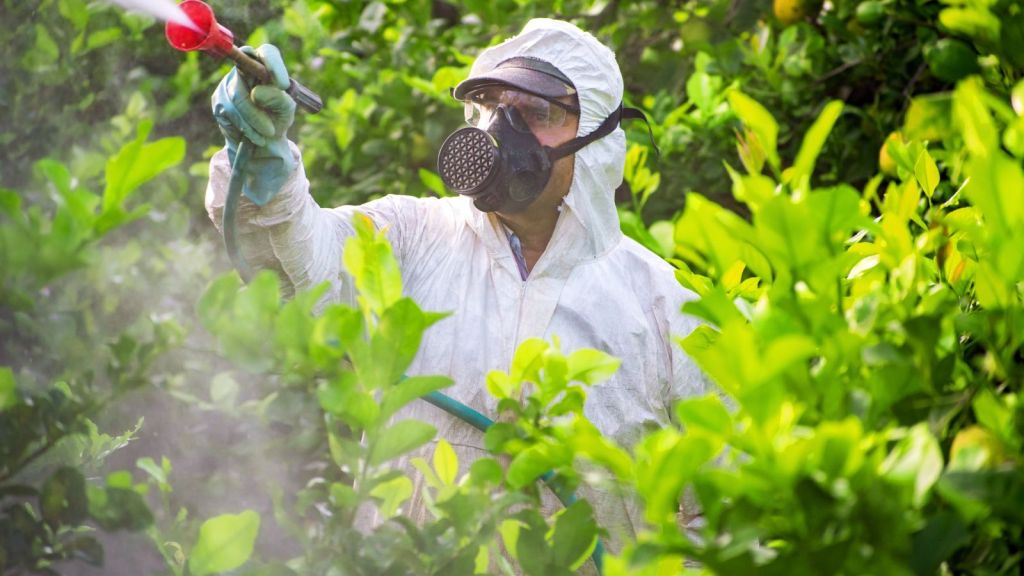
Timing, I’ve found, is critical when applying insecticides. For instance, I make it a point to apply these substances in the evening when bees and other daytime pollinators have retired. This simple step has helped me minimize the collateral damage to these essential garden allies.
#3. Natural Agricultural Method
Taking the time to space my plants properly in my garden pays off in many ways. It enhances air circulation, reducing the humid environment that pests and diseases find attractive. I’ve noticed that this practice also makes spreading pests from one plant to another more challenging. Adopting crop rotation methods, a technique often used by farmers has also proven effective in my home garden. By varying the types of plants I grow in each area yearly, I disrupt the life cycles of plant-specific pests and diseases, keeping them on their toes and preventing recurring attacks on my garden.
Another crucial lesson I’ve learned over the years is the importance of maintaining healthy soil. I’ve seen firsthand how robust plants grown in nourishing soil are better equipped to resist pests and diseases. To achieve this, I make it a habit to regularly add organic matter like compost to my soil and provide balanced fertilization tailored to the specific needs of my plants. These efforts have contributed to a healthier garden with fewer pest problems.
Conclusion
Maintaining a healthy, pest-free garden is within reach with the right strategies and vigilance. So, next time you spot a nibbled leaf or a crowd of aphids, don’t despair. Embrace the challenge, knowing that every garden dilemma is a chance to learn, adapt, and deepen your connection with the intricate workings of nature. After all, the journey is as rewarding as the blossoming result. Happy gardening!
















![[GHC Featured Image Size] (1) common houseplant pests featured image](https://greenhousecenter.net/wp-content/uploads/2023/06/GHC-Featured-Image-Size-1-696x392.jpg)
